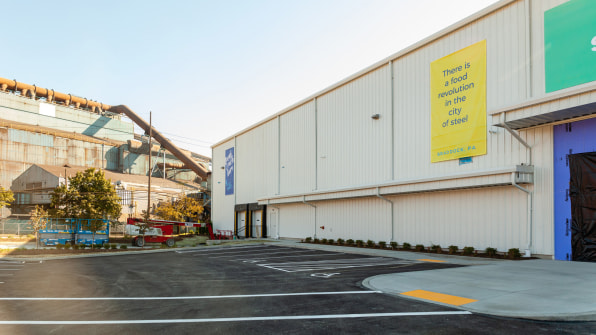For Muslim women hoping to combine stylish clothes with modest dressing, Vivienne Westwood protegé Barjis Chohan may have the answer. And with Muslim fashion worth an estimated £59 million globally, the rest of the fashion world is sure to follow

It’s 2012. We’re bored to death with debates about the hijab. Why women wear it. Whether they are coerced into it. “Oh, but I bet they have a lovely head of hair under there”. SNORE. All this talk neglects the role of fashion in the hijab’s popularity. It’s just easier to be a fashionable Muslim in Britain these days – walk down Oxford street and stereotypes of the hijab as bland and restrictive are laughable. There are gaggles of friends wearing bright leopard print H&M shawls as a hijab, girls with a mountain of fabric piled up to create a beehive style hijab – hell, I even saw a lady wearing a glittery blue cardigan as a headscarf once (I saw the sleeve hanging out).
But mainstream brands seem reluctant to target Muslim women, so the hijab-wearing shopper has to be extra discerning on the highstreet. The whole outfit has to be considered. This means that unless you are wearing an abaya, you need to learn how to layer. Maxi dresses need a jacket, midi skirts need leggings or trousers underneath them and low-cut tops need a sufficiently long hijab. Barjis Chohan, a protegé of Vivienne Westwood, is looking to make things easier with her clothing label, Barjis. Chohan saw a gap in a market flooded with polyester abayas and over-embellished abayas that are impractical and only suitable for special occasions. “Young, fashionable Muslims are struggling to buy clothes from the Western, high-street shops, because of the unsuitable hemlines and necklines, and they resort to wearing layers, which are very hot and uncomfortable in the summer. So that is why I created Barjis, to fill this gap, with practical, high-quality, modest and fashionable day and evening wear for the busy, modern woman.” Her autumn/winter collection features abayas with peter pan collars and dresses designed to be worn over trousers.
The minimalist style of Barjis’ line is reminiscent of Zara’s ‘Studio’ range and the sleekness of maysaa.com. But is it that hard for a muslim to dress on the high-street right now? Last year maxi skirts and dresses were freed from the stigma of hideous boho-chic, thanks in part to Jil Sander’s spring/summer 2011 collection. With its sleek paperbag dresses, Sander’s influence still has the highstreet flooded with maxi skirts. Tapered chinos have trumped skinny jeans as the bottoms of choice, and more recently the Prada and Chanel autumn/winter 2012 shows included mostly dresses and long coats worn over trousers, which the highstreet will be sure to copy.Chohan’s research found that the global muslim fashion market is worth $96 million (£59 million) and with Harrods selling abayas, it’s no surprise that after Issa was bought by Camilla Fayed it featured headscarves and summery twists on the abaya. Of course, fashion fetishises trends as quickly as it discards them, but part of the joy of combining a dress-code with fashion is in searching for new combinations. We can’t all dress like Sheikha Mozah, who has her couture outfits adjusted for modesty, but it’s fun trying.



